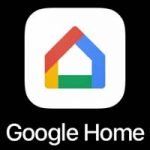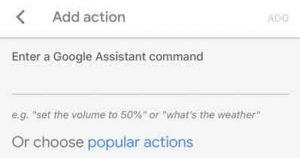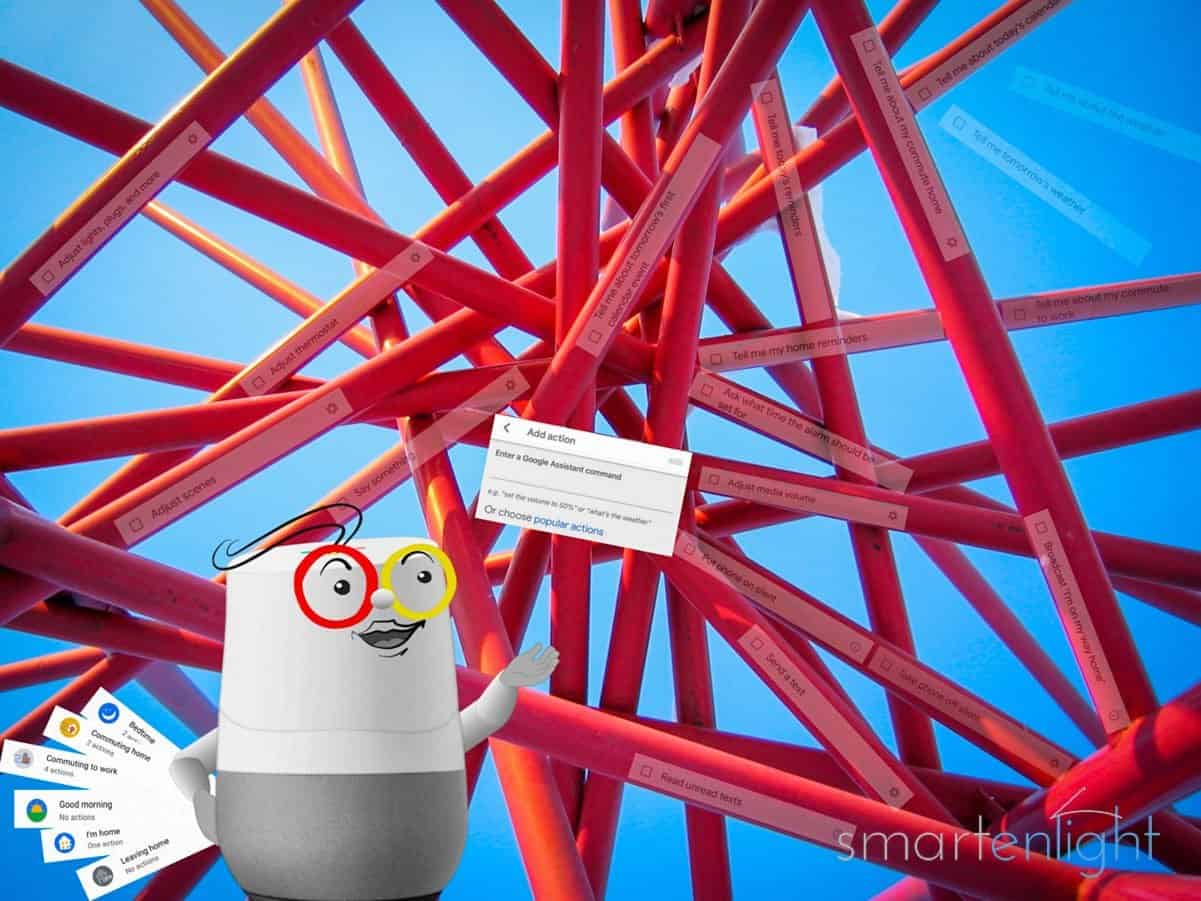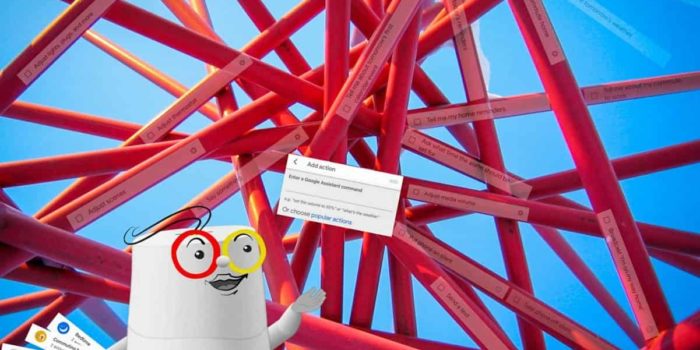It started years ago with shortcuts, then came Google’s ready-made routines. Nowadays, we can create custom routines just by entering any Google Assistant command or by choosing from 20 popular actions. Google Routines are one of the helpful features of our voice assistant, which allow us to automate many aspects of our smart home and life.
Please note, some of the newer features listed here are initially only available in the US. If you are outside of US and can’t find some of the actions in your Google Home or Google Assistant app, please hang in, it usually takes some time until the features become available worldwide.
Estimated reading time: 18 minutes
Table of contents
What are Google Routines?
Google Routines are as easy as: When we say ‘something’ (or at a certain time), Google will perform one or more ‘actions’.
Now, ‘actions’ could be many things. Before we look into the details, here’s Google, explaining his routines in the picture above, and some examples from our posts. You can pause the clip at around 2:47, more examples are listed below:
- When we say “Hey Google, the beach” he will put us at a sunset beach. puts us at a sunset beach. He will color our room orange red, and gold with our smart lights, and play soothing ocean sounds from our post: Google Routines: Immersive Storytelling with Ambient Scenes and Sounds
- When we say “Hey Google, office concentrate”, Google will set our smart lights to the ‘concentrate’ scene and play some music to focus – How to Synchronize Multiple Scenes (and play some Music) (Philips Hue), How to Synchronize Multiple Scenes (and play some Music) (Nanoleaf Aurora)
- When we say “Hey Google, Good Dyson Night”, Google will switch our Dyson Pure Cool to an oscillating night mode and play babbling brook sounds for 30 minutes – Create a Google Routine to Control the Dyson Pure Cool (needs Logitech Harmony)
- At a certain time (e.g. 6PM), Google will set our smart lights to a certain brightness or light scene (e.g. ‘Relax’) and gradually dim the lights before bedtime – How to Schedule Routines (Philips Hue), How to Schedule Routines (Nanoleaf Aurora)
- We can create personalized voice commands for our music – How to create Your Own Music Commands with Google’s Routines?
- We can create custom favorite channel commands for our TVs – Our own Favorite Command and a “What did they say?” routine to skip back 30 seconds (Logitech Harmony).
- Personal Easter-eggs: When we say something, Google replies with a custom answer and gives us hints for a real easter egg hunt – How to create our own Google Easter Egg?
Where to find Google Routines?
Google Routines can be found in the Google Home app (both iPhone and Android: Home dashboard / Routines / Manage Routines), as well as in the Google Assistant app (iPhone: Google account / Assistant / Routines).
On Android it takes a bit longer to find them (sic!). First activate your Google Assistant:
- Say “Hey Google”, or
- tap on the Assistant icon on the home-screen search bar, or
- tap and hold the home button, or
- if you have a Pixel, squeeze it,
Then tap on the little compass at the bottom right, then tap on your account icon on the top right, then on Settings / Assistant / Routines. If we’re not so happy with this ‘athletic’ user interface experience, we can just use the Google Home app on Android.
How are Google Routines structured?
Google Routines can be activated:
- Required: with one (or more) voice commands
- Optional: at a specific time of day, which can repeat on the weekdays we select.
We can add one or more actions by either:
- Entering the Google Assistant command we would actually say (Please note, you can find many Google voice commands throughout our posts, like Ok Google, Play Some Music! All The Music Commands), or by
- Choosing from popular actions.
At the end of every custom routine we can choose to play media: music, news, radio, podcasts, an audiobook or sleep sounds.
Which Popular Actions can Google perform in a Google Routine?
Home Control

“Adjust light, plugs, and more” lists all our smart home lights and switches and allows us to turn them on or off. To set up smart lights please refer to Google and Philips Hue – Setup and Voice Commands or Google Home and Nanoleaf Aurora: Setup and Voice Commands.

“Adjust thermostat” allows us to set a temperature, you can find a Routine example here: Routine(s) to set the Scene in one Room (Philips Hue).

“Adjust Scenes” lists all our smart light scenes and lets us activate them. Scenes are set up through third-party apps (e.g. Philips Hue – The Smart Setup for Your Smart Lights) and appear here for selection.
Plan Your Day

“Tell me about the weather” gives us the same response as the voice command, the current weather, todays forecast and a feels like temperature.

“Tell me tomorrows weather” gives us tomorrows weather forecast. Weather information surprisingly works also when all location services are turned off on an Android device.

“Tell me about my commute to work” will give us the commute time to our work address according to the current traffic, suggest the fastest route and send it to our phone.

“Tell me about my commute home” will give us the commute time to our home address according to the current traffic, suggest the fastest route and send it to our phone. We can define our work and home address in our account settings under “Your Places”.

“Tell me about todays calendar” gives us a summary of our calendar events and details about the first three entries.

“Tell me about tomorrow’s first calendar event” tells us tomorrow’s first calendar event.

“Tell me today’s reminders” will tell us all reminders which are set for today. On an iPhone, this feature requires the Google Assistant app, on Android it saves it directly into the Services / Reminders.
Please note, when manually creating reminders on Android (‘+’ under Services/Reminders), we are currently sent back to Google Assistant with the command “set a reminder”, which then hangs. Apparently reminders are currently only a voice feature on Android.

“Tell me my home reminders” currently doesn’t work for us. As reminders can be set for a specific time or location, we would expect that Google tells us the reminders for a specific location here.

“Ask what time the alarm should be set for” does exactly what it says and is helpful for e.g. good night routines, as we’ll see in the ready-made routines.
Please note, on Android, we can have a Routine automatically start when we dismiss our morning alarm in the Clock app.
Communication

“Broadcast I’m home” will announce from our Google Home devices that we’re home. Broadcasts can be custom messages or delightful sounds, like in this case.

“Broadcast I’m on my way home” will announce from our Google Home devices that we’re on our way. Please note, while this example is a custom message, there’s also a delightful sound “Broadcast I’m on my way”.

“Send a Text” will send a text from our phone to the number we can specify. If we leave either of those blank, Google will check back when running the routine.

“Read unread texts” (which works only on an Android phone) will read our unread texts.
Your Devices

“Adjust media volume” sets the volume for music, news, radio, podcasts, audiobook or sleep sounds.

“Put phone on silent” (works only on an Android phone), silences the ringer and notifications.

“Take phone off silent” (works only on an Android phone), allows us to set the ringer and notification volume.
Custom responses

“Say something” lets Google respond with a custom message, which we can specify here.
What are Google Ready-Made Routines?
Google provides six ready-made Routines, already containing helpful actions which we can adapt. When we run these Routines for the first time, just by saying e.g. “Hey Google, Good Morning”, Google will explain us the ready-made routine and send us a link for customization to our phone.
Please note, the bold actions below, are the initial / default settings of the ready-made routines, which we can change when customizing our routines.
“Good Morning”

This routine can be activated by saying “Good Morning”, “Tell me about my day” or “I’m up” (or any alternatives we add).
Google suggests following popular actions for this Routine:
- Take phone off silent
- Adjust lights, plugs and more
- Adjust thermostat
- Adjust Scenes
- Tell me about the weather
- Tell me about my commute
- Tell me about today’s calendar
- Tell me today’s reminders
- Adjust media volume
- We can add any other actions
And then play: Music, News, Radio, Podcasts, an Audiobook, or nothing.
“Bedtime”

This routine runs when we say “Bedtime”, “Good night” or “Time to hit the hay” (or any alternatives we add).
Google suggests following popular actions for this Routine:
- Put phone on silent
- Tell me tomorrow’s weather
- Tell me about tomorrow’s first calendar event
- Ask what time the alarm should be set for
- Adjust lights, plugs and more
- Adjust thermostat
- Adjust scenes
- Arm security system
- Lock doors
- Adjust media volume
- We can add any other actions
And then play: Music, Sleep Sounds, or nothing.
Leaving Home

This routine can be activated by saying “I’m leaving” or “I’m heading out”.
Google suggests following popular actions for this Routine:
- Adjust lights, plugs and more
- Adjust thermostat
- Adjust scenes
- Arm security system
- Lock doors
- We can add any other actions
And then play (on an iPhone, we find all media options, on Android nothing): Music, News, Radio, Podcasts, Audiobook, or Sleep Sounds.
“I’m home”

We can say “I’m home” or “I’m back” to activate this routine.
Google suggests following popular actions for this Routine:
- Adjust lights, plugs and more
- Adjust thermostat
- Adjust scenes
- Broadcast I’m home
- Tell me my home reminders
- Adjust media volume
And then play (here we can find all media options): Music, News, Radio, Podcasts, Audiobook or sleep sounds.
Commuting to Work

This routine can be activated by “Let’s go to work” (or any alternatives we add) but only on our phones.
Google suggests following popular actions for this Routine:
- Tell me about my commute to work
- Tell me about the weather
- Tell me about today’s calendar
- Tell me today’s reminders
- Adjust light’s, plugs and more
- Adjust thermostat
- Adjust scenes
- Adjust media volume
And then play: Music, News, Radio, Podcasts, Audiobook, or nothing.
Commuting Home

We can be activate this routine with “Let’s go home” (or any alternatives we add), but only on our phones.
Google suggests following popular actions for this Routine:
- Tell me about my commute home
- Send a text
- Read unread texts
- Broadcast “I’m on my way home”
- Adjust lights, plugs, and more
- Adjust thermostat
- Adjust scenes
- Adjust media volume
And then play: Music, News, Radio, Podcasts, Audiobook or Nothing.
Google Assistant on an iPhone

While the two applications, Google Home and Google Assistant, confuse us by implementing slightly different user interfaces for the same features, e.g. Google Routines, the Google Assistant app supports Siri Shortcuts on an iPhone. What are Siri Shortcuts?
We will find all our Google requests in Apple’s Shortcuts app and we can integrate them into our custom Siri Shortcuts. The iPhone needs to be unlocked to activate Google Assistant, a combination of holding the power button to activate Siri and FaceID to unlock the phone works smoothly.
And, it does not stop there. If you have an iPhone Xs or newer, a NFC ‘Personal Automation’ (What are Personal Automations?) can trigger your Google Assistant commands, too! Controlling your e.g. Logitech Harmony activities is now as easy, as holding your iPhone close to a NFC tag (btw. you can easily test this with a credit card, now!)
Thanks a lot budgethomeautomation, for sharing this insight!
How to create a Custom Google Routine?
To create a custom Google Routine …
- Open the Google Home app
It’s the easiest way to find them currently, both on iOS and Android.

- Switch to the Home dashboard
If you are not on your home dashboard, tap on the little house icon on the bottom left.

- Tap on the ‘Routines’ button

- Tap on ‘Manage Routines’
- Tap ‘+’ to create a new Routine, or tap on a Routine to edit it

- Enter a voice command to trigger the Routine

- (Optional) Enter a schedule

- (Optional) Tap ‘Add Action’ and add or more actions
Alternatively choose from the popular actions

- (Optional) Change the order of the actions
Tap on ‘Change Order’ to rearrange the actions.
- (Optional) Tap ‘Add Media’ and select one service
Select music, news, radio, podcasts, an audiobook or sleep sounds.
- Tap ‘Save’ at the top right
Conclusion
Google Routines are a helpful Google feature, as they allow us to create our personal, helpful voice assistant. They do require a good overview – which you’ve hopefully found in this post – a bit of creativity, and some time to create and test them. This time is well invested, if you use your Google Routines regularly.
Google’s ready-made routines, are an easy way to become familiar with Google Routines, before creating your own custom Google Routines. Give it a try, just by saying: “Ok Google, Good Morning!” or “Ok Google, Good Night!”
Google surprises us with Siri Shortcuts support on an iPhone. We can integrate any Google requests, including smart home commands, as well as a generic “Ask Google” for Siri, which will activate our Google Assistant.
Google Routines can automate and thereby simplify your life. Choose one voice command and activate many actions.
Happy Google Routines!
P.S. You can find more Google posts here: Google Assistant
Knock-knock … Enjoy our Google Joke Animations and Alexa Song Remixes (featuring Google) on YouTube!




